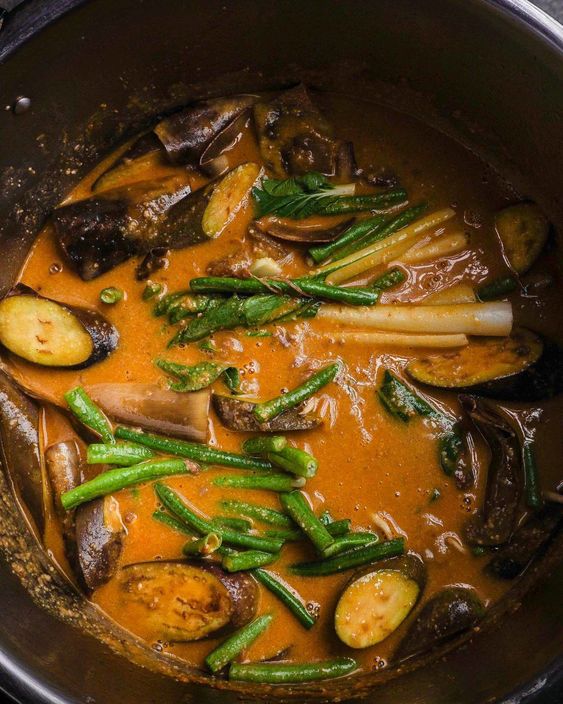Relish Filipino Cuisine with These Filipino Food Recipes.
Genuine Filipino Food Recipes to Try in your home
Discovering genuine Filipino food dishes provides a chance to value the intricate flavors and social value behind each meal. Using fresh, local active ingredients is important, as is embracing communal dining-- a hallmark of Filipino culture.
Popular Filipino Dishes
Filipino cuisine flaunts a rich tapestry of flavors and practices, with over a loads renowned recipes that highlight the nation's varied cultural impacts. Among the most widely known recipes is Adobo, a full-flavored stew typically made with poultry or pork, seasoned in vinegar, soy sauce, garlic, and flavors. Its appetizing flavor profile makes it a staple in Filipino homes.
Another beloved meal is Sinigang, a sour soup frequently made with tamarind, tomatoes, and various vegetables. This meal can include pork, shrimp, or fish, and its refreshing preference is perfect for cozy environments. For those with a sweet tooth, Leche Flan-- a velvety caramel custard-- functions as a preferred dessert, showcasing the Filipino fondness for rich, sweet tastes.
Kare-Kare, a passionate oxtail stew with a thick peanut sauce, together with the famous lumpia, or springtime rolls, even more exemplify the selection found in Filipino food. Each recipe not just uses distinct preferences yet likewise tells a tale of regional active ingredients and historical influences, making Filipino food a dynamic representation of its culture and heritage.
Important Active Ingredients for Filipino Cooking
The significance of Filipino food preparation exists in its vital active ingredients, which function as the structure for the country's precious recipes. A variety of flavors and appearances come together, showcasing the diverse cultural impacts that shape Filipino food.
Key active ingredients include rice, the staple that comes with nearly every meal, symbolizing nourishment and community. Soy sauce, vinegar, and fish sauce (patis) are critical for spices, conveying umami and deepness to recipes. Fresh herbs like cilantro and basil include fragrant freshness, while garlic, onion, and ginger offer a durable flavor base.
Healthy protein sources such as pork, chicken, and fish and shellfish are central to several recipes, frequently marinated to boost preference. Vegetables like eggplant, bitter melon, and green beans contribute vital nutrients and balance - Filipino food recipes. Coconut milk is an additional considerable component, offering creaminess and a refined sweetness to different stews and treats
Finally, calamansi, a citrus fruit, supplies a rejuvenating flavor that elevates recipes and beverages alike. With each other, these ingredients produce the vibrant and rich tapestry of flavors that specify Filipino food, basics making it both calming and distinct. Understanding these basics is important for any individual wanting to duplicate authentic Filipino recipes at home.
Step-by-Step Recipe Overview

Begin by preparing your components. For Adobo, slice the meat into uniform items and season it in soy sauce, vinegar, garlic, and bay leaves for at the very least half an hour. Next off, heat oil in a frying pan and sauté the garlic and onions until great smelling, after that include the marinaded meat, enabling it to brown evenly.
For Sinigang, start by steaming water in a pot and adding your selection of meat. When tender, include tamarind paste or fresh tamarind for that trademark sour flavor. Follow with vegetables like radish and kangkong, cooking up until just tender.

Tips for Authentic Flavor
Often, achieving authentic taste in Filipino meals depends upon the mindful option and treatment of ingredients. Start with fresh, top notch produce, as the vibrancy of veggies and why not find out more herbs significantly boosts the meal's overall taste. Staples like garlic, onions, and ginger develop the aromatic foundation for lots of recipes; utilizing them in proper percentages is essential.
Picking the appropriate protein is similarly essential. For example, typical adobo often uses poultry or pork, marinated to absorb the marinate's complete taste. In addition, take into consideration sourcing locally created or local active ingredients, as they can give authenticity that store-bought alternatives lack.
Cooking techniques likewise play an essential role. Slow-cooking approaches, such as braising or stewing, enable tastes to meld wonderfully, while frying can include an enjoyable texture. Don't neglect flavoring; utilizing salt, fish sauce, or soy sauce at the appropriate minutes can boost a meal significantly.
Serving and Appreciating Filipino Food
Cooking experiences are enhanced when Filipino food is served with attention to custom and neighborhood. The method of sharing meals is main to Filipino society, signifying unity and friendliness. When serving Filipino meals, think about utilizing standard serveware, such as clay pots or bamboo baskets, which enhance the authenticity of the experience.
Usually, Filipino meals are appreciated family-style, with a selection of meals put at the center of the table. This public technique motivates interaction and allows visitors to sample different tastes. A well-curated spread may include staples like adobo, sinigang, and lumpia, complemented by rice, which is a fundamental part of every meal.
Accompanying the food with typical spices, such as soy sauce, vinegar, or chili paste, can raise the eating experience, inviting diners to tailor their plates to their preferences. Furthermore, integrating local drinks, like calamansi juice or tuba, can boost the overall taste profile.
Conclusion
